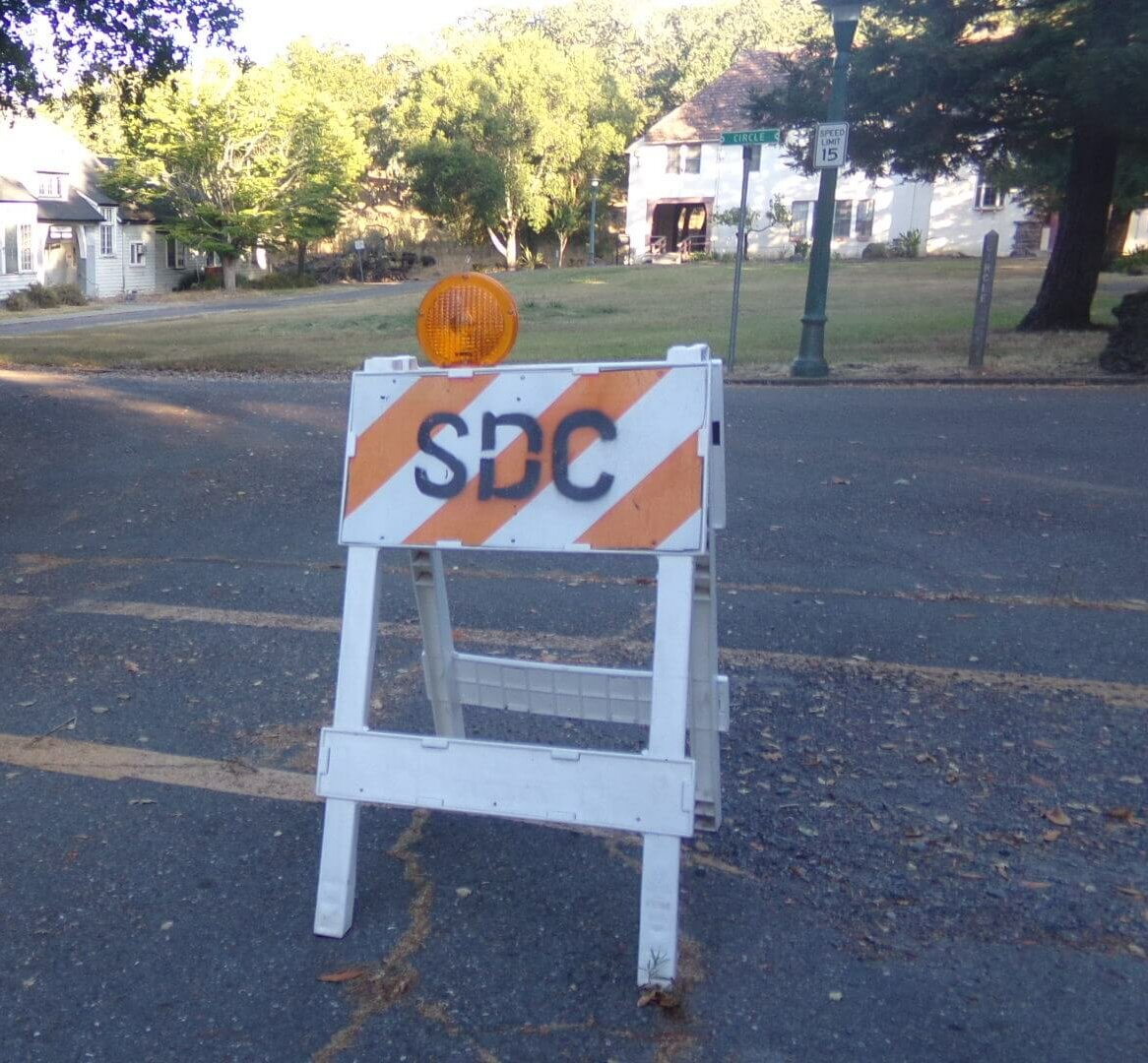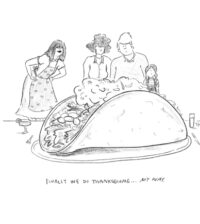The North Sonoma Valley Municipal Advisory Council (NSVMAC), an official but non-binding panel that reports to the Sonoma County Board of Supervisors, rejects the current plans for the Sonoma Developmental Center.
“None of the current alternatives reflect the many environmental constraints on the site, nor do any strike a balance between financial interests, affordable housing, and environmental and community well-being,” concludes a formal letter to the board signed by NSVMAC Chair Arthur Dawson. “The alternatives do not reflect the themes heard over and over in multiple Valley-wide workshops regarding the appropriate size and scale of development, and adequate protection of the wildlife corridor and surrounding open space.”
The Sonoma Valley community’s reasons for rejection of the proposed alternative plans are aligned and consistent, Dawson stated.
The full letter follows:
Dear Sonoma County Board of Supervisors:
The NSVMAC has prepared this letter for consideration by the Board of Supervisors (Board) and Sonoma County planning staff regarding the proposed land use and design alternatives for the SDC Specific Plan. The primary purpose of this letter is to summarize public input received by the NSV MAC in response to the SDC Specific Plan Alternatives Report prepared by Dyett & Bhatia and published by the County in early November 2021.
This letter incorporates the extensive community input from public meetings on November 17, 2021, December 15, 2021 and January 5, 2022, the Sonoma Valley community survey, as well as written correspondence and NSV MAC comments, and synthesizes this information into several main themes to create the framework for a community-supported land use alternative.
The intent of this exercise is to provide sufficient information to enable the Board to direct Permit Sonoma staff to develop a preferred alternative that truly reflects the community vision for SDC as articulated in the January 2021 Draft Vision and Guiding Principles.
As reflected in the hundreds of comments received since publication of the Alternatives Report, the Sonoma Valley community does not support any of the three alternatives proposed by the County; 71% of participants rejected all three alternatives when polled during the SDC Alternatives Workshop on November 13, 2021. We also reference a non-affiliated Sonoma Valley survey (community survey) conducted by Sonoma Valley resident Dr. Shannon Lee, Biology Department Faculty at Sonoma State University in December 2021. The survey received 672 responses, 95% of which were from Sonoma Valley and Sonoma County residents.
The SDC is not suitable as an “urban infill site” and the community’s rejection of the proposed alternatives reflects the incompatibility of the scale of proposed development with the adjacent Glen Ellen communities and the site’s environmental constraints.
Request for Community-Driven Process for Preferred Alternative
On behalf of the community, the NSV MAC requests the Board to delay the initiation of the California Environmental Quality Act (CEQA) process to prepare an Environmental Impact Report (EIR) for a preferred alternative until after a new alternative reflective of site constraints and community input is developed as promised in the December 17, 2019 agreement between the State of California and Sonoma County. The NSV MAC requests the Board to direct staff to pursue this new alternative as outlined in this letter.
Community Input as Framework for a Preferred Alternative
The community continues to support the January 2021 Vision and Guiding Principles that have underpinned community workshops, Sonoma County requests for proposals for preparation of the Specific Plan, and related efforts during this multi-year SDC redevelopment process. These principles are most recently expressed on pages 10-11 of the Specific Plan Alternatives Report. The community feedback conveyed in this letter reflects these principles through an integrated vision of development at an appropriate scale, with an intention to balance affordable, inclusive housing and related commercial development with the protection of SDC’s open space (a California public trust resource), the Sonoma Valley Wildlife Corridor, the historic district portions of the SDC campus, fire safety and climate resiliency, and the rural character of the surrounding region. An alternative with substantially reduced density is necessary to ensure that the negative impacts of development on traffic, public safety, wildlife corridors, water/water treatment, and related issues do not cause environmental and social harm.
The nine community priorities are summarized below and detailed in the Appendix to this letter. OPEN SPACE. Community input consistently emphasizes the singular opportunity the SDC campus represents in terms of protecting the open space and wildlife corridor in the context of a vibrant, sustainable community. Over 90% of community survey respondents ranked “preservation of openspace” as the highest priority; this is consistent with the state’s 30×30 goals.
This concern goes beyond setting aside open space lands and creating creek and sensitive habitat setbacks. The density of development planned within the SDC campus must not exceed the carrying capacity of the site’s resources. In other words, it must not result in overuse of open space resources or interference with wildlife movement and permeability.
HOUSING DENSITY. The community unequivocally supports the creation of additional housing on the SDC site, particularly affordable housing, however at a lower density (450 or fewer housing units) than that included in any of the alternatives published to date. Higher housing density will move the surrounding communities from a “rural” to “urban” designation based on current U.S. census definitions (see Appendix) and is a primary driver of unacceptable impacts, including environmental, infrastructure, traffic and related public safety issues.
AFFORDABLE HOUSING. The community supports a considerably higher percentage of affordable housing than the approximately 25% included in the published alternatives, with 76% of community survey respondents indicating a preference for 50-75% (or more) affordable units. Use of available funding mechanisms and incentives—including revisiting the State’s obligations for SDC site cleanup and remediation—must be included in the financial feasibility assumptions to maximize the affordable housing percentage (see Site Governance / Funding below).
ADAPTIVE REUSE OF EXISTING BUILDINGS. Public and NSV MAC member comments indicate that the County should revisit the potential reuse of existing buildings to satisfy some of the housing needs on the East Side of the SDC campus.
UTILITY INFRASTRUCTURE. An energy sustainability plan, including a microgrid design, should accompany any SDC development, as should a thorough review of the potential benefits of an on-site sewage treatment facility in light of the challenges to the existing Sonoma Valley infrastructure.
FIRE SAFETY/ CLIMATE RESILIENCY: Fire safety and climate resiliency will be impacted by the other elements of the site plan—water use/recycling, energy grids, housing density—and their impacts on traffic and public safety. These interconnected factors must be more intentionally considered in any preferred alternative for this site. The Sonoma Valley community has expressed particular concern that fire risk, evacuations and related community preparations have evolved significantly during the course of the SDC re-development process. 71% of community survey respondents indicated that the County has not adequately addressed fire hazard, traffic and other impacts to the community in the proposed alternatives.
HISTORIC PRESERVATION. The community recognizes the importance of preserving the historic, architectural, and aesthetic character of the SDC campus, and envisions permanent protection, preservation and management of selected buildings and structures within the historic district. More specifically, the community has consistently supported the preservation of an historic district on the west side of the SDC campus which could include a museum, library, research hub and visitor center, all of which would be linked with the cemetery and open space.
COMMERCIAL SPACE / JOB CREATION: The community supports innovative use of commercial space (education, training, research) and inclusive job creation at a scale suitable for this semi-rural site. In addition, the community wants to see commercial space set aside for COMMUNITY-oriented functions, e.g., a community center or school, and is prepared to explore funding options for these uses.
SITE GOVERNANCE / FINANCING: Many members of the public have requested consideration of establishing a trust or similar management entity to oversee redevelopment and implementation of the Specific Plan rather than a private developer. A trust mechanism would open opportunities for public financing and site management that would broaden the potential for successful redevelopment AND community compatibility. In fact, the Board’s April 2019 resolution “Supporting a Land Use Planning process and considerations for disposition of the Sonoma Developmental Center Site,” states:
“Be it further resolved that the Board may also consider in the future a Joint Powers Authority,Trust or other mechanism to facilitate the disposition and transition of the site to meet the desired outcomes.”
Community members have clearly articulated the conflict inherent in creating a plan that is both appropriate for Sonoma Valley and financially feasible, with these economics driven in large part by the dilapidated infrastructure and environmental cleanup liabilities left by the State. The State must help defray the significant costs to clean up the site that it has left in poor condition to ensure that the plan is not merely driven by economic factors. 89% of community residents surveyed believe that the State should be responsible for clean-up and other remedial maintenance of the site.
Conclusions
The Sonoma Valley community’s reasons for rejection of the proposed alternative plans are aligned and consistent. The alternatives do not reflect the themes heard over and over in multiple Valley-wide workshops regarding the appropriate size and scale of development, and adequate protection of the wildlife corridor and surrounding open space. None of the current alternatives reflect the many environmental constraints on the site, nor do any strike a balance between financial interests, affordable housing, and environmental and community well-being.
The community has spoken clearly. On its behalf, the NSV MAC respectfully reiterates its request that the Sonoma County Board of Supervisors direct staff to work with the community to develop an alternative using the framework as outlined above.
Sincerely,
— Arthur Dawson
Chair, North Sonoma Valley Municipal Advisory Council
cc: Permit Sonoma, Sonoma City Council Mayor Jack Ding, Congressman Thompson, Senator McGuire, Senator Dodd, Gov. Gavin Newsom, Wade Crowfoot, local media, Assemblymember Aguiar-Curry, Springs MAC, SVCAC, Sonoma County Regional Parks, Agricultural Preservation and Open Space District, Sonoma County Historical Society








Be First to Comment